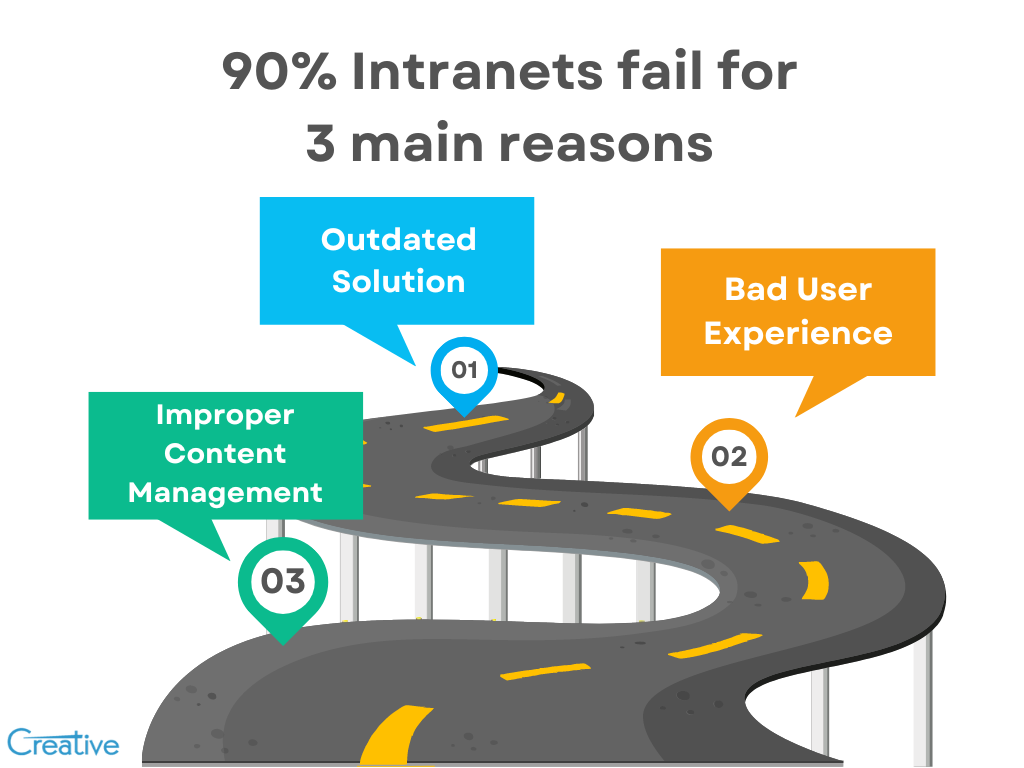
Transforming Intranets: Why Change is Crucial for Modern Businesses
Digital platforms known as intranets have been used by businesses for internal communication and information sharing for over 20 years. Nevertheless, they continue to face obstacles and find it difficult to match the demands of modern enterprises.
Table of Contents
Looking back on Intranets
Intranets were primarily simple websites run by IT specialists when they initially debuted in the mid-1990s. Regrettably, they frequently disregarded the pragmatic requirements of enterprises.
Social networks like Facebook began to take off by the middle of the 2000s, which had an impact on the creation of platforms for business-oriented social collaboration. Nevertheless, rather than meeting actual business demands, these platforms were frequently driven by technology.
These days, we’re battling not just the same intranet issues as before, but also brand-new ones like dispersed communication, distant work, and information overload.
5 Reasons Intranets Must Change
Considering the past, the following five factors indicate why intranets must change to serve contemporary businesses:
1. Outdated Solutions:
The first goal of intranet design was to enhance communication and information access. But they’ve mostly stayed IT-focused, ignoring routine business requirements and failing to change to meet the demands of contemporary communication.
2. Patterns of Failure:
Research indicates that 90% of intranets malfunction after three years. Uncertain governance, a lack of direction, a poor user experience, and out-of-date or irrelevant content are typical causes.
3. User Experience:
A lot of intranets have a bad user experience since they don’t meet the various needs of different users. Customizable solutions frequently result in reliance and failure since they demand a high level of IT support.
4. Content Management:
Outdated information is frequently dumped into intranets. To stop this, proper content curation is necessary, and emerging systems like the “Auto-Governance Engine” try to solve this problem.
5. Purposeful Design:
Rather than overloading users with material, intranets should concentrate on presenting pertinent, timely information. Users can more efficiently explore information by adopting a “less is more” approach to content curation.
Looking Forward
Even though intranets have advanced, considerable work remains. The industry needs to comprehend the particular difficulties that contemporary businesses encounter and provide workable answers. There is optimism despite the high failure rate because contemporary intranet solutions are emerging to address today’s issues.
Categories: